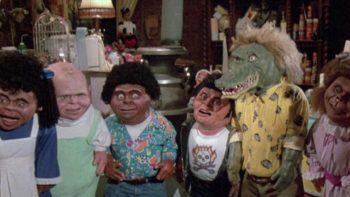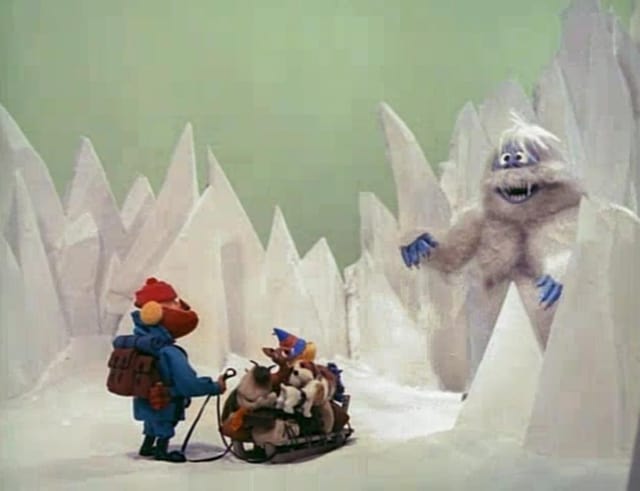
Like A Charlie Brown Christmas, there are a select few things that even though weren’t created in the 80s, are still a part of 80s nostalgia.
Rudolph The Red-Nosed Reindeer was a TV movie produced by Rankin/Bass in 1964. It’s based on the poem by Robert L. May and the song by John Marks. It has become the most successful, and longest-running Christmas special in television history.
As was mentioned with a Charlie Brown Christmas and It’s The Great Pumpkin Charlie Brown, there are only a few things that don’t come from the 80s that I want to focus on for this blog. You no doubt remember the Rudolph movie as a big part of your childhood, and Christmas, during the 80s.
The Rudolph movie is, of course, not limited to the 80s as it’s found an audience with every generation. But for kids of the 80s, the Rankin-Bass Rudolph TV special has been adopted by all of us. It’s amazing that a TV special that is more than 50 years old continues to be a crucial part of the Holiday season. For some people, Christmas doesn’t start until Rudolph airs on TV and the first few scenes of it immediately bring up this magical feeling that happens every time you watch it.
This article will be a look back at the Rudolph movie, how it came to be, and the legacy that it left on not just kids from the ’60s but into the 70s, 80s and beyond. A lot of this info is a combination of my own insights and the great work from Rick Goldschmidt. He’s an expert on everything Rudolph and does a great interview from DragonCon that you can watch on YouTube.
He’s also the author of the amazing book that you can buy on Amazon (affiliate link) “The Making of The Rankin/Bass Holiday Classic: Rudolph The Red-Nosed Reindeer”
The Story Before The Rudolph Movie
You probably think of the holiday special when you think of Rudolph. Or you may even think of the song which predates it. But both are predated by a booklet written by Robert L. May in 1939. The story of Rudolph was created for a retailer in Chicago called Montgomery-Ward.
They had given out colouring books for Christmas and thought it would be cheaper if they made their own one. May would put this together and somehow landed on the idea of using a reindeer as the main character. He played around with a few named including “Rollo” and “Reginald” before landing on Rudolph.
The story behind the story is that May needed a theme and got one when looking out of his office window to a fog covering Chicago. The idea hit him that a bright red nose would be able to shine through the fog to help Santa find his way.
The department store originally hated the idea, especially with Rudoolh having a red nose. At the time, a way to caricature a drink in comics and cartoons was to give them a red nose. May brought in an illustrator to create a look that would not imply this at all.
The story was written as a poem and 2.4 million copies would be produced. The first mass-marketed version of Rudolph the Red-Nosed Reindeer would be published in 1947 by Maxton Books. There would be a few follow up books including the sequel “Rudolph the Red-Nosed Reindeer Shines Again” from 1954.
It turns out that May had already written a sequel in 1947 but it was never released until Applewood Books tracked it down and released it in 1992 entitled “Rudolph’s Second Christmas.”
Rudolph The Red-Nosed Reindeer: The Song
Quick, who first sang the song about Rudolph?
If you guessed Gene Autry, you’re wrong. The version you most likely thought of is indeed the Gene Autrey version, but it was first performed by Harry Brannon and was first heard in New York City in November 1949.
The song was written by Johnny Marks, who was a brother-in-law of May. Marks took the general story that existed from the poem but added in a part where he gave names to the other reindeer. Marks would also write songs such as “Rockin’ Around The Christmas Tree.”
Gene Autry would end up recording it in 1949 but originally passed on it. He felt this Christmas kiddy song would detract from his cowboy persona he was trying to give off – but aren’t we all… It was his wife that convinced him to record it. It was originally pitched as a “B-side” choice for a record and Autry had very little confidence in it. The song was, of course, a massive hit and reached number 1 on the Billboard charts.
Not only was it by far the biggest hit of his career, but it would also be the biggest selling single in the history of Columbia records. The album he released with him and Rudolph on the cover would sell two million copies its first year, 30 million total, and is the second best-selling Christmas album ever after Bing Crosby’s White Christmas.
The song has been recorded dozens of times by many prominent artists, and it gave us the image and story that would be captured in the Rankin/Bass Rudolph movie.
The Rudolph Cartoon
Before the Rankin/Bass special would come out, Rudolph would first appear in a cartoon in 1948. This was before the hit song came out but it follows the basic story from the poem. There isn’t any island of Misfit Toys, or Bumble, but is the standard telling of Rudolph being shunned but rising up to save the day.
This is just a short film and clocks in at around 8 minutes and was also done to promote the Montgomery-Ward department store the same way the original story was about a decade earlier. The cartoon didn’t feature any music, but when the song became a massive hit, it was added in for a re-release in 1951.
Here’s a restored version you can watch on YouTube of the original 1948 release that features Silent Night at the beginning instead of the Rudolph Song along with the name of Montgomery Ward (which was taken out of future versions). It looks kind of Disney-ish and also sounds like it was recorded in a closet.
Who Was Rankin/Bass?
This name is synonymous with stop-motion animation for a variety of TV specials. Rankin/Bass productions started not that long before Rudolph would first air in 1964. Started by Arthur Rankin, and Jules Bass, they were first known as Videocraft International in 1960. They dubbed their style of stop-motion animation “Animagic” which would be produced in Japan.
They also did some traditional cell animation using a studio in Canada called Crawley Films. Their first few releases included the stop-motion New Adventures of Pinocchio in 1960 and then an animated special called Tales of the Wizard of Oz.
These were meant just as little kiddie shows that would be shown around the country. Both of these productions would be funded by regular bank loans, and they didn’t get a lot of return on their investment. Rankin/Bass wanted to get on network TV and their first properly funded special would be 1964’s Return to Oz bankrolled by General Electric. This was the first type of sequel that existed for the Wizard of Oz which came out 25 years prior.
Return to Oz was cell-animated and supposed to be their big splash into network TV – but that didn’t really happen. So now they are looking to take another shot at a decent TV special and Arthur Rankin happened to be friends with John Marks who suggested the idea of a Rudolph special.
The premise of the story sounded good and they would also bring in the original author Robert May to help put this thing together. They also decided that instead of animation they would give another attempt at the “Animagic” style they used on the Pinnochio special.
Putting The Rudolph Special Together
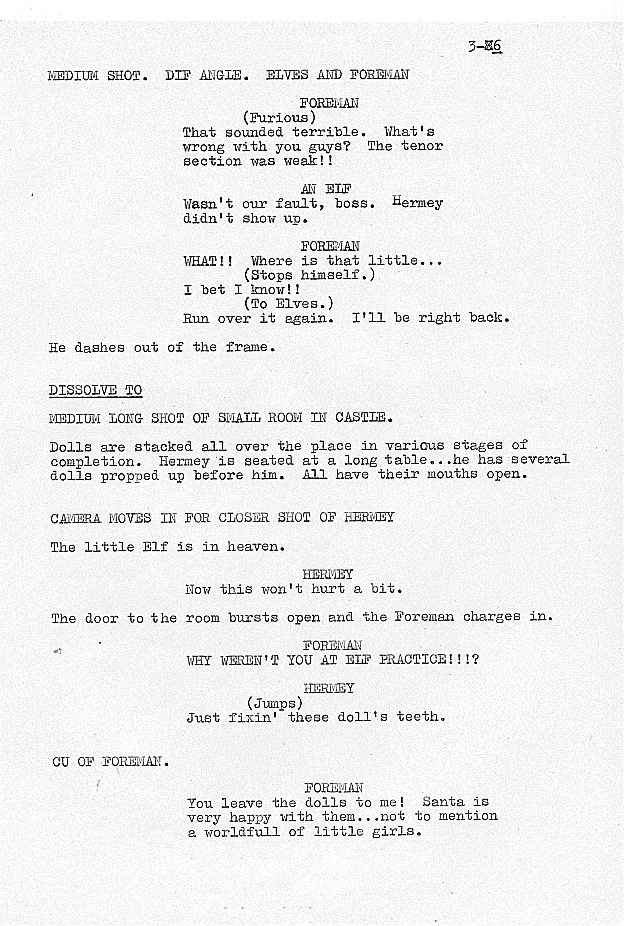
General Electric was again behind putting a new special on TV for the Holidays, and they wanted to go with Rudolph. All of this was conceived by a man named William Zoloft who was vice-president of GE’s housewares divisions.
The main reason that he definitely wanted to go with Rudolph was first that it was coming up on the 25th anniversary of the original Rudolph the Red-Nosed Reindeer book. The other reason was probably the main reason: he knew he could get permission to make the special as he was friends with Robert May after working with him back at Montgomery Ward in 1939.
Rankin/Bass was still Videocraft International but their work in stop-motion animation with the Pinnochio special was seen as the right choice to make their Rudolph movie. They were given 18 months to put together the special. They had a budget of $500,000 (around $4.2 million converted for today) to not only make the special but the commercials for it that featured GE. (You can check out the original commercials here on YouTube)
Since the original story (and the song) were pretty short, they had to put together a longer script. May and fellow writer Romeo Moller put together a new script that would focus on Rudolph as he grew up and the fellow kids of the original 8 reindeer.
It’s funny because in the special we think of the reindeer that pulls the sled at the end as the classic ones from the song – Dasher, Dancer, Prancer, Vixen, etc. But they’re not. This is the story of them in the future as parents – with Rudolph being one of those kids.
They would also use a bit of the Joseph Campbell “Hero’s Journey” that would center around Rudolph leaving home, growing up, facing his fears, and coming back a new man – er, new buck. They would also create new location and characters such as:
- Hermey the Elf (NOT Herbie)
- Clarice
- Yukon Cornelius
- Sam the Snowman
- The Bumble
- The island of Misfit toys
The Music & Changing The Direction of The Show
A big part of what makes this special so great are the amazing songs featured in it. Original song creator, John Marks would be brought back to create the iconic songs. He wasn’t sure at first about how he was going to pull it off but brought us such classics as:
- Silver and Gold
- Holly Jolly Christmas
- There’s Always Tomorrow
- Fame and Fortune
A big part of the Rudolph special that made it so great would be the narration and sung by Burl Ives. His familiar and calm demeanor walked us all through the show and brought life to the songs he sang including Holly Jolly Christmas and Rudolph the Red-Nosed Reindeer itself.
But Ives wasn’t a part of the project from the start.
At first, the narration was going to be done by Larry D. Mann who did the voice of Yukon Cornelius. They had the entire special recorded with Mann doing the narration in a Brooklyn accent. When the opportunity to get Ives involved presented itself, they jumped at it. Ives was an American icon already and his involvement with the show brought it a lot more credibility.
This is similar to how Alec Guinness joining the cast of the original Star Wars movie would help do the same thing.
Since none of the animations had been done yet, they were able to create Sam the Snowman with the likeness of Ives.
How The Voices Brought This Special To Life
The stop-motion animation is pretty endearing and beloved, but it’s still a bit simplistic. The models for the characters looked great, but it was the voice acting that really brought this special to life.
I hadn’t realized this but the entire voice cast (except for Burl Ives) were all fellow Canadians. This was because of Jules Bass using the Canadian Crawley Films which gave him access to these voice actors.
Everyone featured in Rudolph the Red-Nosed Reindeer were classically trained radio performers. This medium gave them the ability to create and hone characters based on just seeing an image, or getting a simple description of them. Even though radio was dead everywhere else, it lived on in Canada because of the Canadian Broadcasting Corporation (CBC) and they remained the best voice talent in the world.
Rudolph would be voiced by 41-year-old female, Billie Mae Richards who would also be the voice of several Care Bears. Stan Francis provided the voice of both Santa and King Moonracer, Paul Soles voiced Hermy (Soles was also the voice of Spiderman in the original cartoon from the 60s), and Janis Orenstein voiced Clarice.
Thes actors really brought to life these very lifeless puppets and helped create the true tone of the movie. The big problem was that this special was only meant to be a 2-3 year thing so the union contracts they signed only covered them for that and not the 55 plus years it’s been going for. This left most of those voice actors really soured over the following years.
Some More Of The Production Details
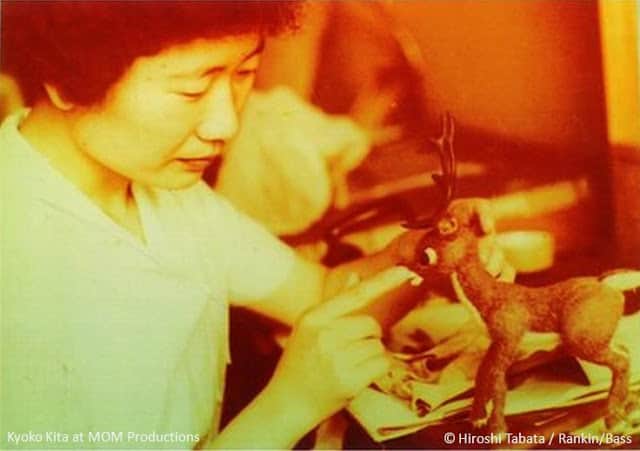
Rudolph would be created in Japan where the Animagic process had been created and perfected. Rankin would go over to supervise things but everything you are watching in this show was made over there.
Most of the puppets used for the special were made out of wood, with over 200 different characters being created. Real materials such as wool and fur were used to try and make them look as real as possible. Did you ever think how Rudolph and some of the other characters’ eyelids looked like they were made of Leather? That’s because they were.
The puppets weren’t very big at all with the largest – The Bumble – coming in at 22-inches high. Fun fact: The scary scene of the bumble peering over the mountain comes from the real-life nightmares of one of the writers.
Everything would be finished by the summer of 1964 and was ready for a viewing audience.
Here’s something really bizarre I learned while researching all this; The very first airing of Rudolph the Red-Nosed Reindeer happened on December 6, 1964, on NBC.
At 4:30 in the afternoon…
There was no concept of releasing a kid’s holiday special during prime time as it just made more sense to put something like this on after school. And it was a huge hit, crushing everything else in the ratings.
The Original Ending & Future Changes To The Special
Unless you watched that original broadcast or somehow saw a tape of it, you would have seen a show that is different from the ones that existed from 1965 to right now.
The end of the original broadcast has Santa flying overhead in his sleigh with Elves dropping presents. There were no misfit toys and they had been flown right past them leaving them behind after they thought Santa was coming for them.
Upset kids started writing thousands of letters wondering what had happened to all the misfits. GE decided they needed to resolve this storyline and would create a new ending. So in all future versions, we get a shot of the misfit toys gathered around a fire before being taken in by Santa.
The ending now shows the misfit toys being dropped out of the sled. The old one version was using the presents dropped from the sled to display the closing credits. Because of this new and longer ending, some cuts to the original show had to be made. The first thing to go was an extended version of We Are Santas Elves, which included a longer musical interlude.
There was also the issue of “We’re A Couple Of Misfits” sung by Hermey and Rudolph. This was a full scene in the original 1964 airing but was replaced by “Fame and Fortune” in 1965. In 1993, CBS found the original Misfits scene and put it back in making it the closest thing to the original version. In 2005, for some reason, CBS put out a new edit of the show. The still included the audio of “We’re A Couple Of Misfits” but it was dubbed over the scene for “Fame and Fortune.”
Also, what’s the deal with Suzie the misfit toy as she doesn’t seem to have anything wrong with her. Apparently – according to Rankin and the writers – her issue is that she was “under psychiatric care at the time.”
Another part cut – which should never have been removed – was Yukon Cornelius finding a peppermint mine, which was what he had been looking for throughout the entire movie.
I wish we could get a despecialized version of this released but I’m still waiting for a despecialized Star Wars and I’m not holding my breath on that one. If you don’t know what I’m talking about, you’ll have to just look that one up.
The story of the missing puppets
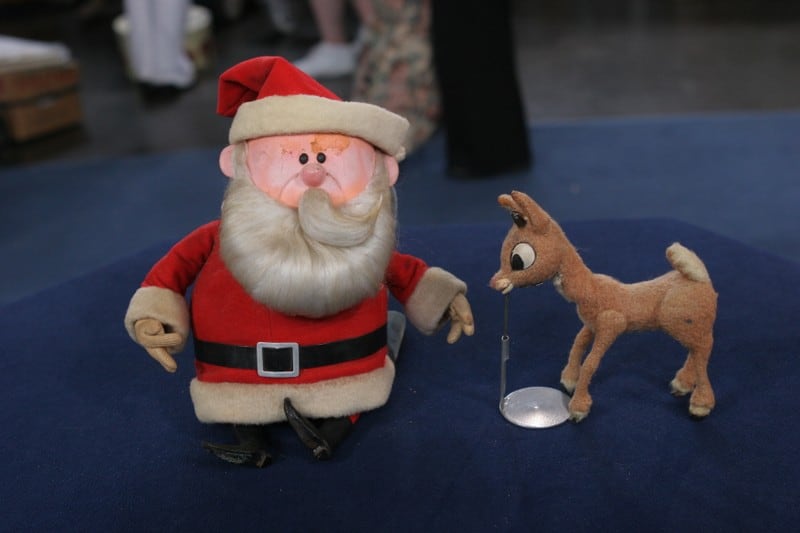
You may recall seeing this story on places like CNN, but this is the case of the lost – and then found – original puppets. I’m not sure if you can call the figures used for filming “puppet” but I guess technically they are.
So here’s the story: There were a few sets of the puppets used for filming, one stayed in Japan and a few of the characters were given back to Rankin/Bass who had them displayed in Rockefellers center in New York as the show was still owned by CBS.
Eventually, the puppets were taken back and Rankin would end up giving them to his secretary Barbara in 1970. She took them home and just gave them to her nieces and nephew who would end up playing with them like any other toy. They eventually found their way into the upstairs attic where her nephew would find them years later – but they were in pretty bad shape.
The puppets – specifically Santa and Rudolph – ended up on the Antiques Roadshow where they were considered to be the authentic thing. These two were the only surviving ones as the others had all melted together from being stored in the attic.
They were valued at around $5000-8000 despite what rough shape they were in. They would end up being sold on eBay for around $12,000 where Goldschmidt would help in their restoration process.
The newly restored figures were taken on the road so everyone would be able to see a piece of TV history. They then would end up being sold again for $100,000 to a private dealer who would then be offered $200,000 by Hollywood Treasures.
The owner would then put them back up on eBay with the astronomical price tag of $10 million. As of right now, I believe they are still with that private owner so who knows where, or with who, they will end up.
Wrapping It Up
Despite this being a blog about the 80s, you know how important the Rudolph movie was to you if you grew up in the 80s. It is the most successful, and longest-running Christmas special in TV history and even though it’s available online, on-demand, and on video, it’s airing on network TV each year causes a massive interest.
In 2018 it pulled in 8.14 million viewers and seems to stay around the 8 million mark every year. It also creates a stir on social media with Rudolph trending in the top ten worldwide on Twitter. Even Yukon Cornelius would be a worldwide trending topic. I think as long as TV exists, the Rudolph movie will still be played.
There’s more backlash these days due to the bullying issue and issues of inclusion, but this special has become synonymous with the Holiday season.


